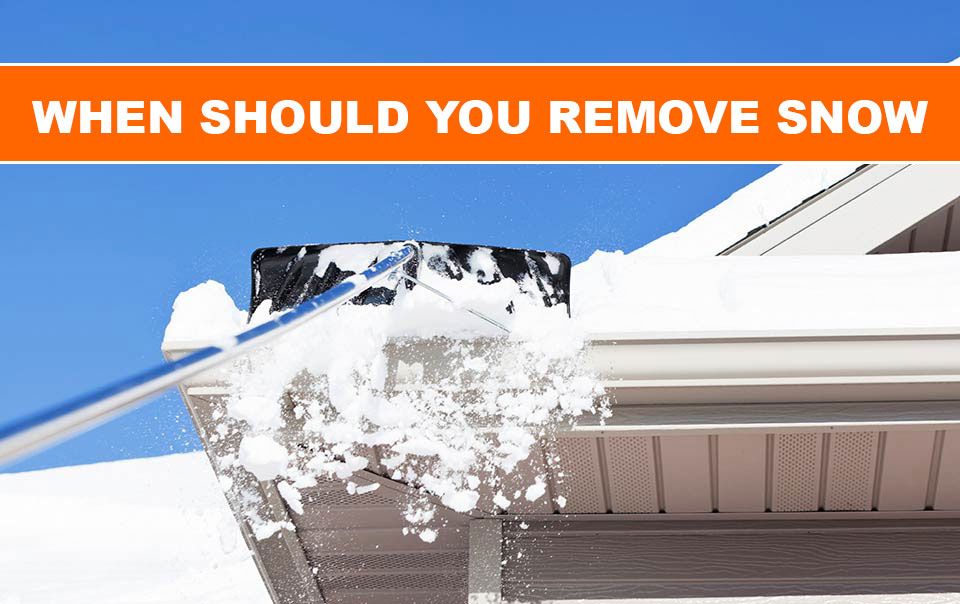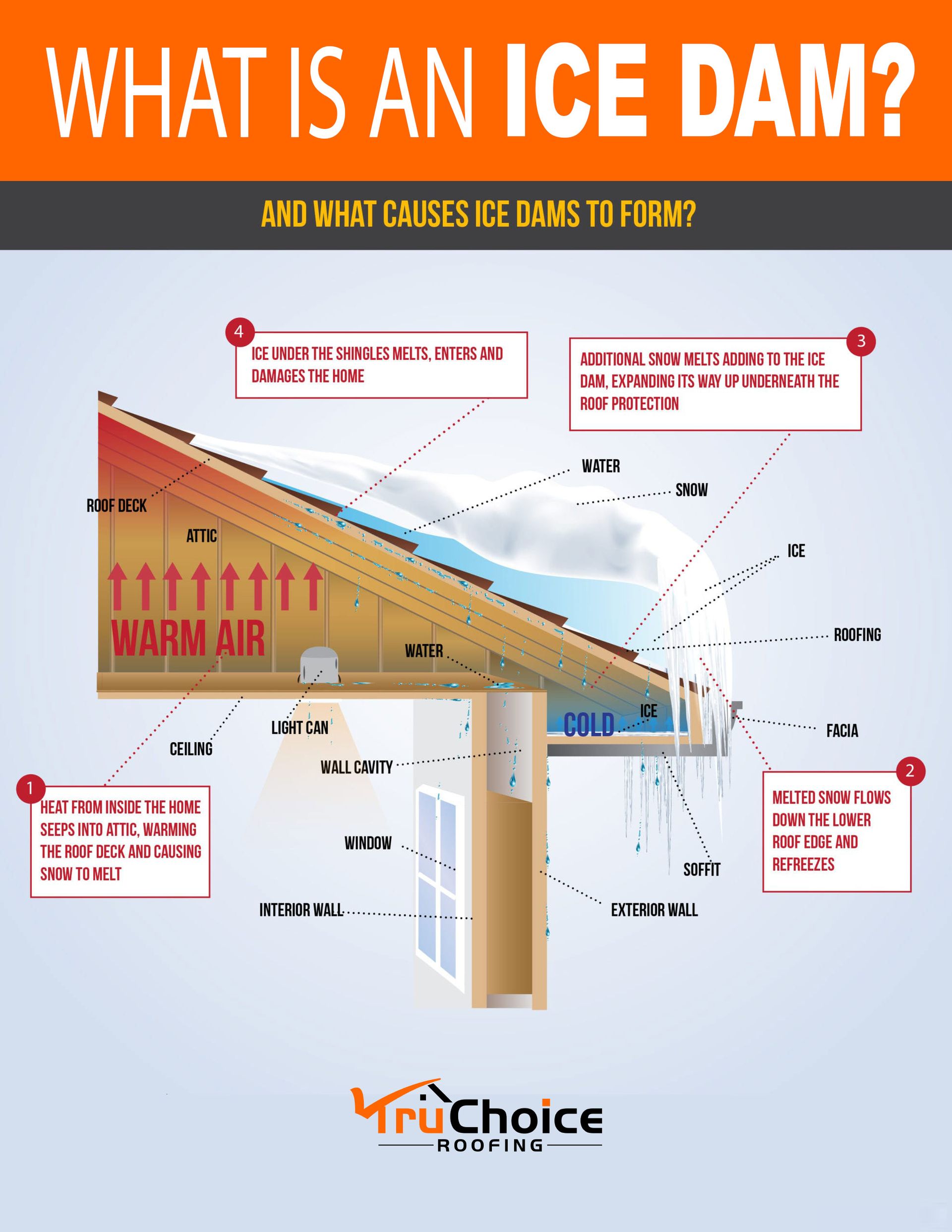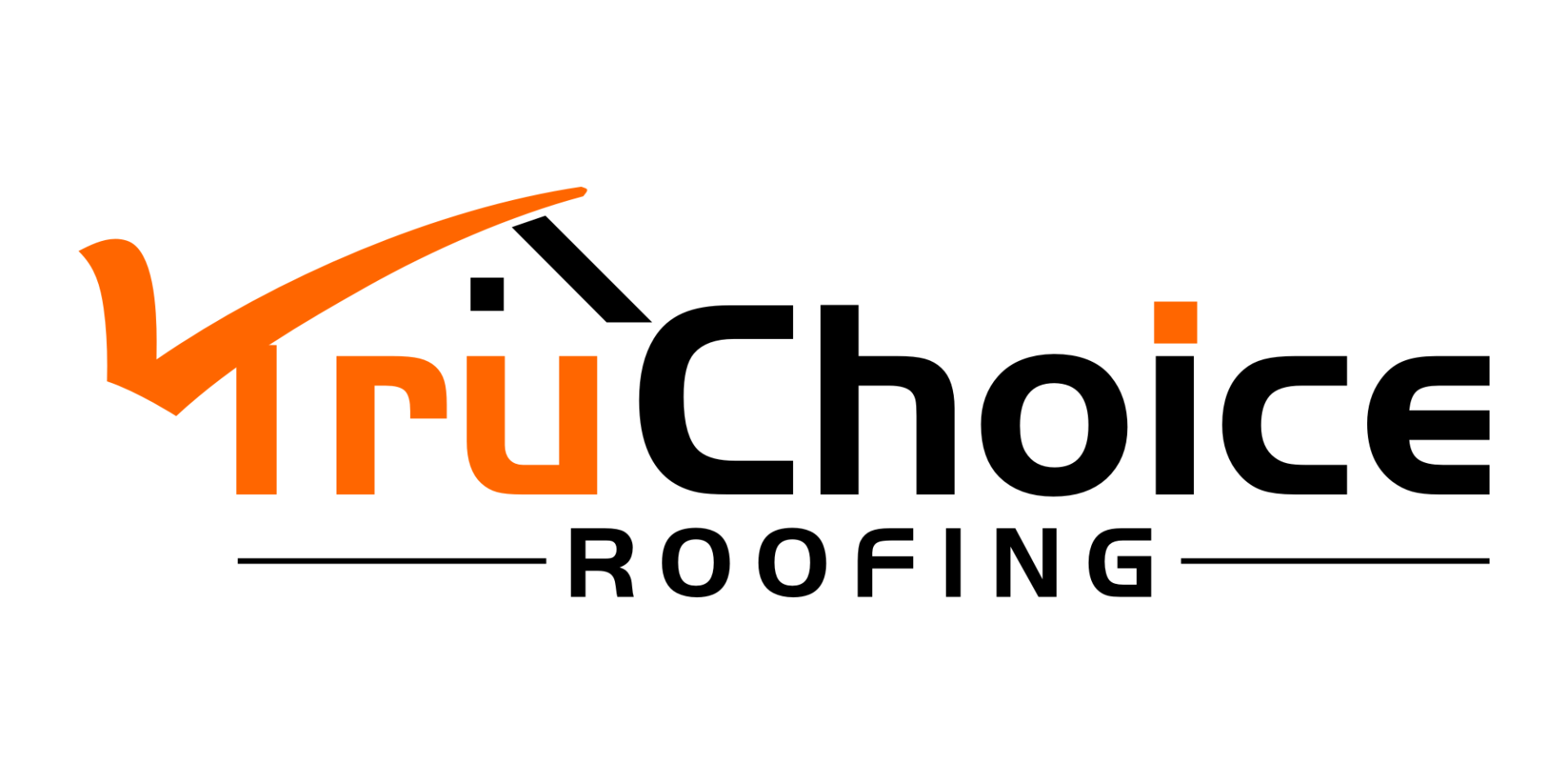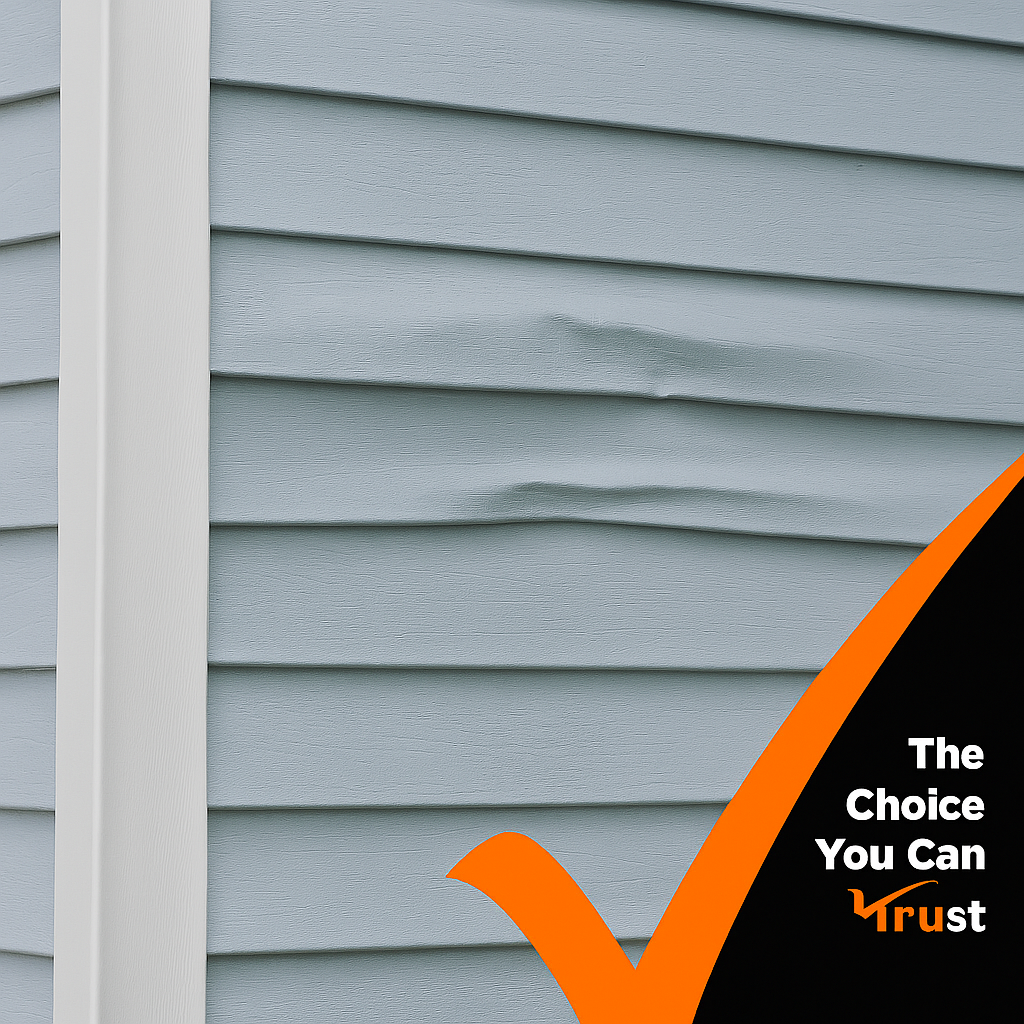The Ultimate Guide To Safely Remove Snow From Roof
Snow on the roof can be a dangerous hazard and should not be taken lightly. During winter, it's important to know the best time to clear snow from your roof to keep yourself and your family safe. In this blog post, we'll talk about why removing snow from your roof is important and the best times to do so. We'll also provide tips on safely clearing snow off your roof without putting yourself at risk. So if you're looking for advice on when and how to tackle this task, read on!
If you have any questions at all about removing snow from your roof call us at TruChoice Roofing at 260-222-8812!

When Is The Best Time To Clear Snow From Your Roof?
Think again if you're considering taking on snow and ice removal yourself! Not only could clearing the snow yourself put your safety at risk, but it also can save a lot of time and energy if you leave it to a professional. From there, you can relax indoors, enjoy a warm beverage, and ensure the job is done correctly. Don't put yourself in danger; let someone else help reduce your workload and keep you from worrying about icy patches or slipping hazards. You'll be thankful that you didn't try to tackle this project alone.
It is recommended to remove snow from your roof in the following instances:
5 Tips to Safely Remove Snow From Your Roof
When winter approaches and the landscape is blanketed in snow, it's critical to evaluate the various hazards that piled snow can pose to your roof. The weight of snow on the structure might cause structural damage, leaks, or even a complete roof collapse. It is critical to safely remove snow from your roof in order to avoid these risks. However, in order to minimize physical danger or further damage to the roof, this task must be carefully planned and executed. You can assure a safe and effective snow removal process while preserving the integrity of your roof by following a few simple principles. We will give you with essential advice and insights on how to safely remove snow from your roof, allowing you to protect your home.
1) Clear Snow From Your Roof When There Is 6 Inches Or More Of Accumulation:
To prevent damage from snowfall, it is important to clear your roof when there is 6 inches or more of accumulation. This will help avoid unnecessary strain on your roof and ensure that melting snow does not cause problems such as water damage or frozen pipes. Please make sure to tackle the job early in the afternoon so that the sun can help clear off any extra iciness during the day and avoid dangerous nighttime conditions, especially if you live in an area with a high avalanche risk. Taking proactive measures like clearing away snow buildup can give you peace of mind and save potential costs associated with building repairs due to heavy winter weather.
2) Snowstorm of 2 Feet or More:
Heavy snowfall can put immense pressure on your roof, making it more prone to caving or structural damage. Clearing any accumulated snow after a heavy snowstorm of 2 feet or more is essential to avoid this risk. Again, it would be best if you planned to remove the snow early in the day so that any snow remaining can be cleared off by the sun during the day.
3) Heavy Ice Accumulation:
Another time to consider removing snow from your roof is when there is heavy ice accumulation. Snow and ice on a rooftop for weeks, or even months, can create dangerous conditions and make it difficult to remove the buildup. If you see any ice formation on your roof, could you make sure that you take action to clear it away?
4) Low Temperatures:
Low temperatures can also cause the snow to freeze on your roof, making removing it difficult and more dangerous. When temperatures drop below 10 degrees Fahrenheit (-12 Celsius), it's best to wait until the temperature rises before removing any accumulated snow from your roof. This will make it easier and safer to clear away any buildup.
5) After Snow Melting:
Lastly, could you consider clearing away any snow left after it begins to melt? This is especially important in the days following a storm or when temperatures start to rise. Melting snow can cause water damage and frozen pipes if not removed quickly.
How Can Professional Snow Removal Services Help Clear Snow From Your Roof?
When you need to take snow off your roof, there's no one better to call than a professional. Roofing pros work in teams, safely climbing onto roofs and utilizing steam or hammers to remove ice formations. Vast experience allows them to identify the source of any sudden ice dams, which could be caused by poor insulation, ventilation, or attic bypasses that allow warm air into attics and lead to some areas being melted by warm air and then freezing quickly. Professional snow removal contracts can run an average price of $350-$450 annually, depending on the services provided. With their expertise and experience, they can remove snow quickly and efficiently, saving you tiring work and the potential for personal injury.
Is it Risky to Attempt Snow Removal From Your Roof Yourself?
Removing snow from your roof by yourself is a terrible idea; not only is it extremely dangerous and can result in serious injury, but it can also be potentially deadly. Even if you don't feel any pain, the potential for an accident is too great. You may slip or fall off the slippery roof or even lose your balance while climbing a ladder with snow and ice. If you have any heart conditions or back issues, this activity could be even more hazardous to your health.
Use a roof rake to clear away snow from the ground level. When that isn't possible, hire a professional trained to work carefully in these scenarios. They won't put their safety at risk, nor will they risk incurring an injury or having a cardiac event. Don't take the chance: ensure you follow the right precautions when dealing with snow removal on your roof this winter season!


Is it Necessary to Remove Icicles From Your Home?
Icicles may look beautiful and festive, but icicles can create a slippery surface and dangerous conditions. Besides, they can cause damage to your roof or gutter system, as well as someone falling off the ladder while attempting to remove them. While removing icicles from your home is only sometimes necessary, you should take precautionary measures if you see excessive ice buildup. It's best to call for professional help when dealing with these situations. They will be able to use proper safety equipment and techniques to prevent accidents or property damage. Taking care of the issue sooner rather than later helps ensure that your home remains safe this winter!
What are Ice Dams, and How Can They Be Prevented?
Ice dams refer to the buildup of ice along the roof's edge when the snow melts unevenly due to inadequate insulation or ventilation. The melting snow can cause water to back up underneath the shingles and into your home, so it's important to prevent these hazardous conditions. To reduce the risk of an ice dam forming on your roof, adding insulation in attic spaces or sealing off any attic bypasses that allow hot air into attics can help. It would be best to ensure that eaves and other low-hanging areas are clear of snow, as this will create a slope that encourages draining away from your home while preventing accumulation during heavy snowfall.
Finally, installing a waterproof membrane along the entire length of your roof can also help prevent ice dams from forming by providing stability and shedding water quickly before it has a chance to freeze along the edges. Professional advice is always helpful when dealing with large-scale issues such as this. Hiring someone experienced in maintaining roofs will ensure you take all necessary precautions for future winter seasons!

How Can You Remove And Prevent Ice Dams?
When it comes to removing and preventing ice dams, there are a few steps you can take. Here are some of the most effective methods:
1) Invest in a De-Icing System
Consider installing a de-icing system if you live in a region with harsh winters and heavy snowfall. These systems can be fitted to noncombustible and most asphalt shingles. Some models are also compatible with metal roofs, but it's best to consult a professional to ensure safety and determine the best system for your roofing material.
Just so you know, the system should be installed before snowfall, so have it professionally installed in the spring, summer, or fall. Installation requires roof access, ladders, and expertise in cable placement, so only a professional can do it. The system needs an outdoor electrical outlet, which an electrician can install if you don't have one.
The de-icing system consists of cables attached to the roof eaves and gutters. The cables heat up to prevent ice dams from melting snow before it refreezes in the gutters. The system uses a lot of electricity and may increase your monthly energy bill, but some systems self-regulate to conserve energy. Unplug the system in warm weather, but it can be left up year-round once installed.
2) Use a Roof Rake to Remove Ice Dams:
If you already have ice dams on your roof, you'll need to remove them safely and quickly. A roof rake is the best tool for this task. It consists of an extendable pole with a metal rake attached at one end. The pole can reach up to 20 feet in length and has soft bristles to prevent damaging roof shingles.
To use a roof rake, remove snow from the area around the edge of your roof to create an angle that encourages water runoff. Then, start removing the ice dam by pushing away chunks at a time with the rake. Work slowly and carefully, taking extra caution near your gutter system. If any large chunks break off and cause damage to your gutters, replace them immediately to prevent leaks and other problems in your home's structure.
3) Use a Manual Ice Chopper or Hammer
If you don't have a roof rake handy, you can also use an ice chopper or hammer to chip away at stubborn ice dams. Be careful when using either of these tools on roofs, as they may slip and cause damage to shingles. Also, please don't use an electric saw or drill, as they can spark a fire hazard.
4) Seal Any Air Leaks in Your Attic
Finally, you'll need to seal any air leaks in your attic that may contribute to ice dam formation. This involves inspecting your attic for gaps or cracks around vents, pipes, and other areas. Use foam insulation or weatherstripping to fill in these openings and prevent warm air from entering the space underneath the roofline.
Following these steps, you can successfully remove and prevent ice dams on your roof.
Professional Snow Removal Services:
Having a professional snow removal service help with your roof is always the best option. Not only will they have the necessary equipment and expertise to safely remove snow from your roof, but they can also inspect your house for any potential causes of future ice dams or issues that may cause problems in the winter months. Plus, utilizing a contract-based service ensures that someone will be available when an emergency arises instead of waiting until after another storm has occurred and risking further damage. With professional snow removal, you can have peace of mind knowing that your roof is prepared for the worst winter weather.
Conclusion
Ice dams can be a major problem in the winter and can cause serious damage to your home if left unaddressed. The best time to clear snow from your roof is when it's not too windy, and the snow has stopped falling. Suppose you can wait until later in the day when the sun has had a chance to melt snow so it will be easier to remove. And finally, make sure you have the right equipment on hand before you start a strong rake that can reach high areas and maybe even a set of telescoping poles to help push the snow off from a safe distance.
Do you need any help clearing roof safely?
Call us at
TruChoice Roofing at
260-222-8812 with any questions at all about removing snow from your roof! We would be happy to help!








